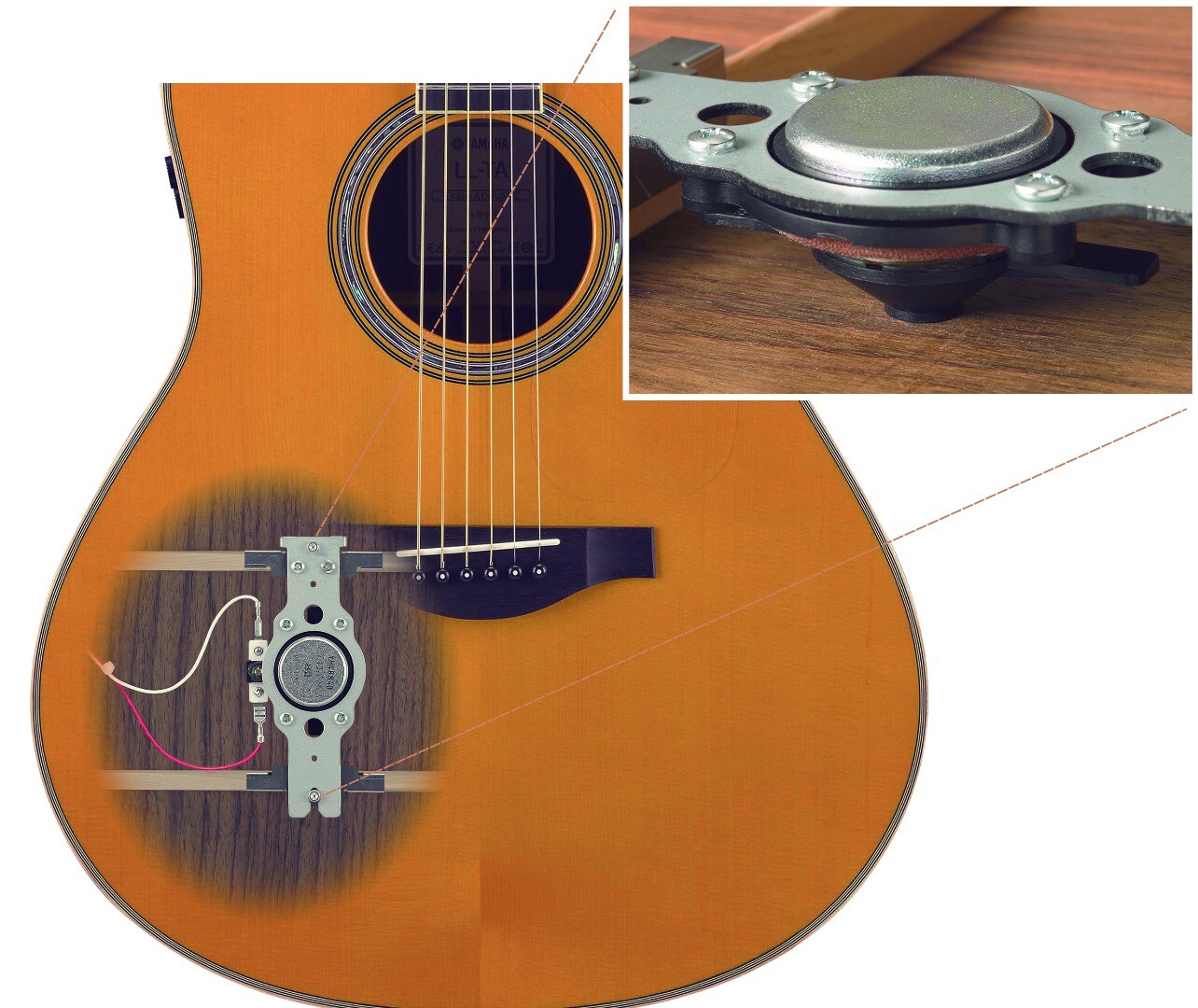As many pickers will tell you, playing an acoustic guitar in some rooms, like a lounge or bedroom, can result in rather lifeless and dry tones fighting for air. Yamaha is looking to inject some concert hall warmth and vitality into such performances by taking a technology originally developed for its acoustic pianos and installing it in a new range of acoustic guitars. Its TransAcoustic guitars add reverb and chorus effects to the sound coming from the instruments themselves without having to add in external effects or rely on microphones or amplification.
The TransAcoustic technology used for Yamaha's pianos basically stops the hammers from hitting the strings and uses sensors to determine depth and velocity, sending that information over to a tone generator for "full-range, digitally generated sound that is acoustically amplified and enhanced." The acoustic guitar version is a little different.
The Yamaha LL-TA dreadnought and LS-TA concert acoustic guitars have an actuator installed on the inner surface of the guitar's back. Plucking the strings causes the actuator to vibrate, and these vibrations are then carried by the body and the air in and out. This essentially results in natural reverb and chorus sounds (as opposed to digital or synthesized tones) bursting out from inside the guitar to accompany the natural sound of the guitar's strings. Levels and blends are adjusted using three knobs on the upper side of the guitar's body.

Both guitars are available in vintage or sunburst finishes and feature an artificially-aged spruce top, rosewood back and sides. The body is said to feature a modified non-scalloped bracing design for enhanced low end while retaining a bright tone. An ebony fingerboard tops a climate-resistant mahogany and rosewood neck with a double-action adjustable rod that's reported to stay intonated over time.
The guitars can also be used as electro-acoustics thanks to an SRT piezo pickup and strap end/output jack module that also houses an integrated battery box.
Yamaha has yet to set US pricing for the new guitars (though a European suggested retail price of €1,107 might offer some indication of cost). Shipping is expected to start later this year. In the meantime, have a look at the promo video below for a taste of what's to come.
Product page: TransAcoustic







